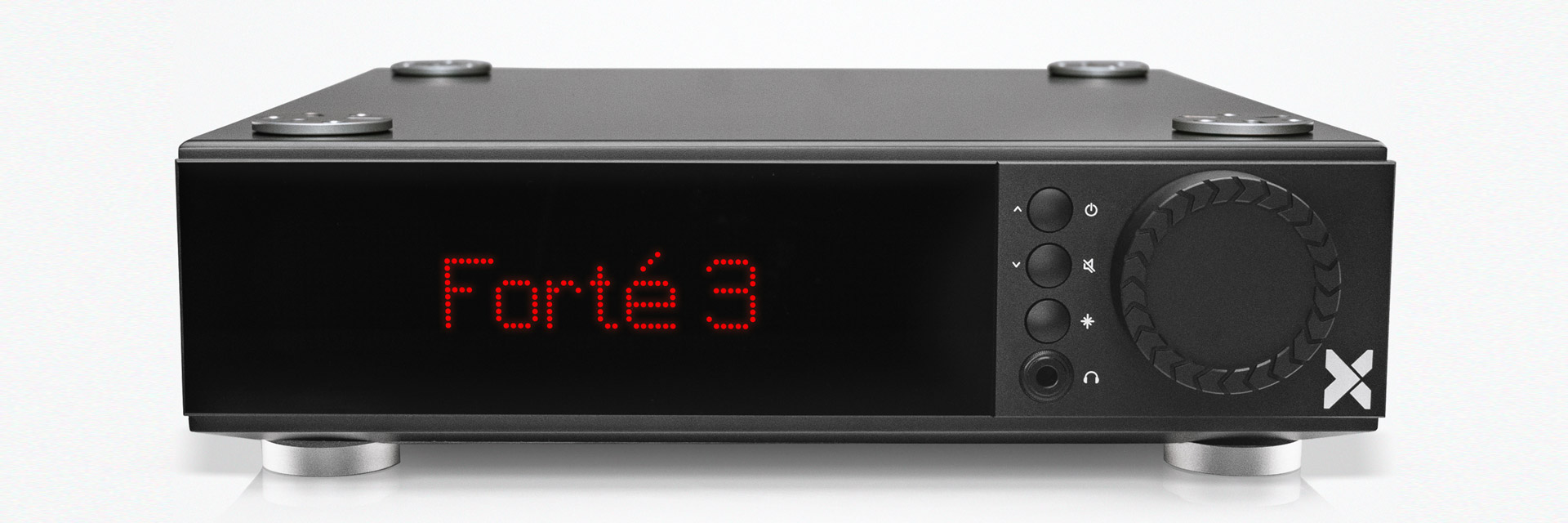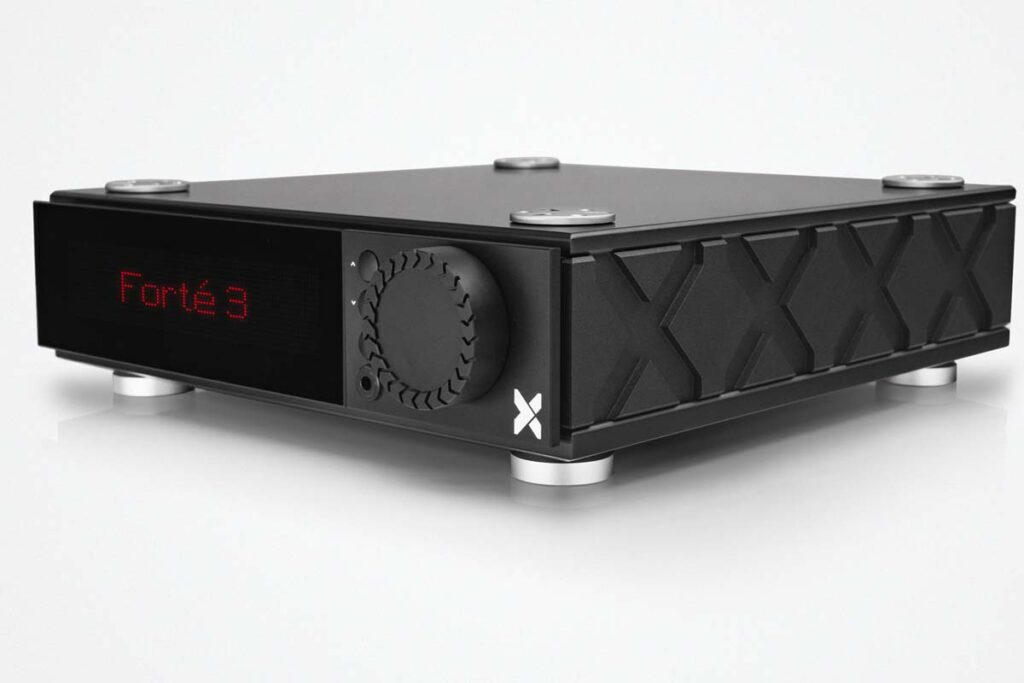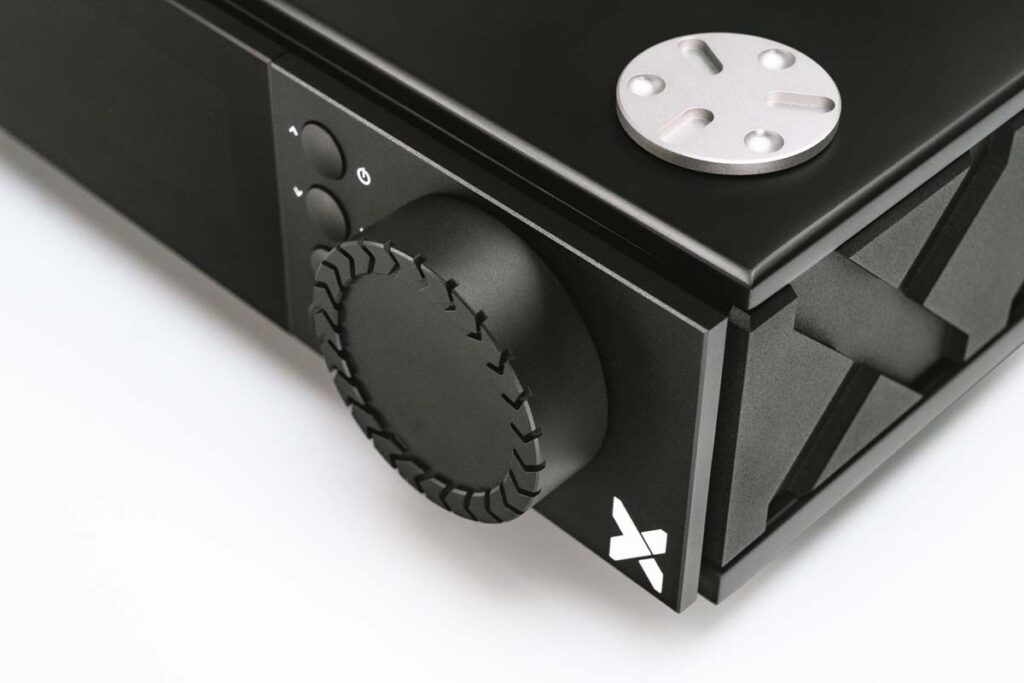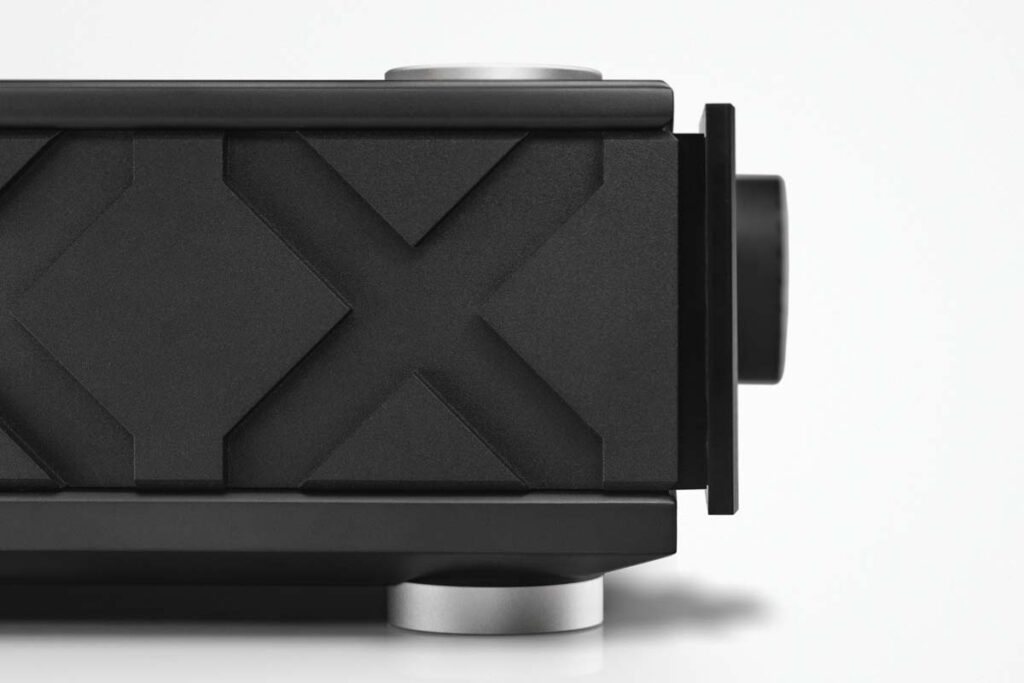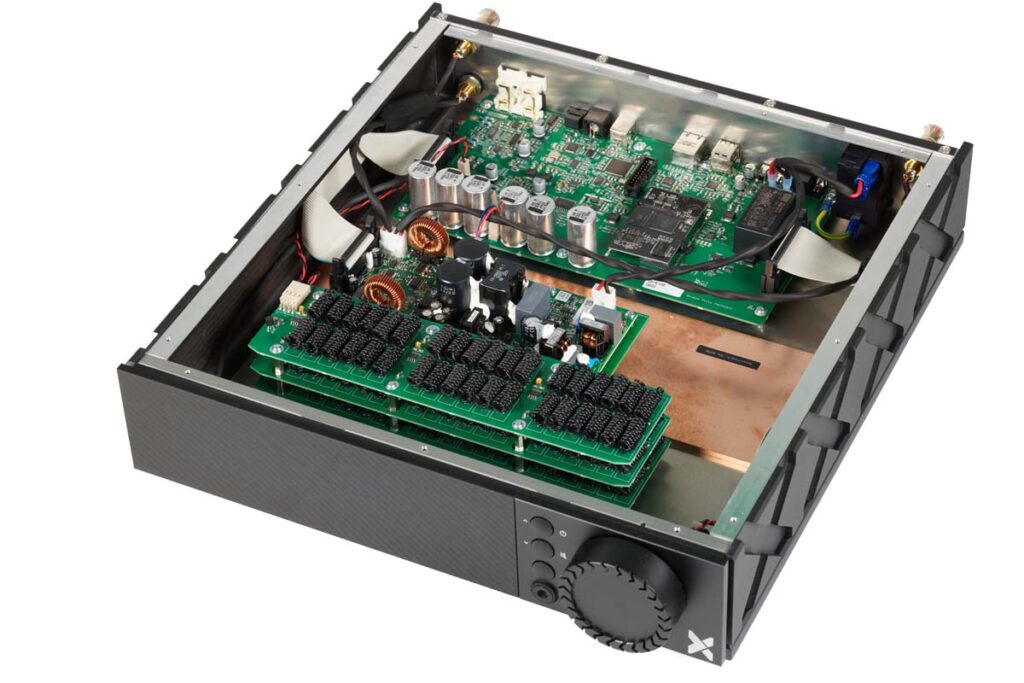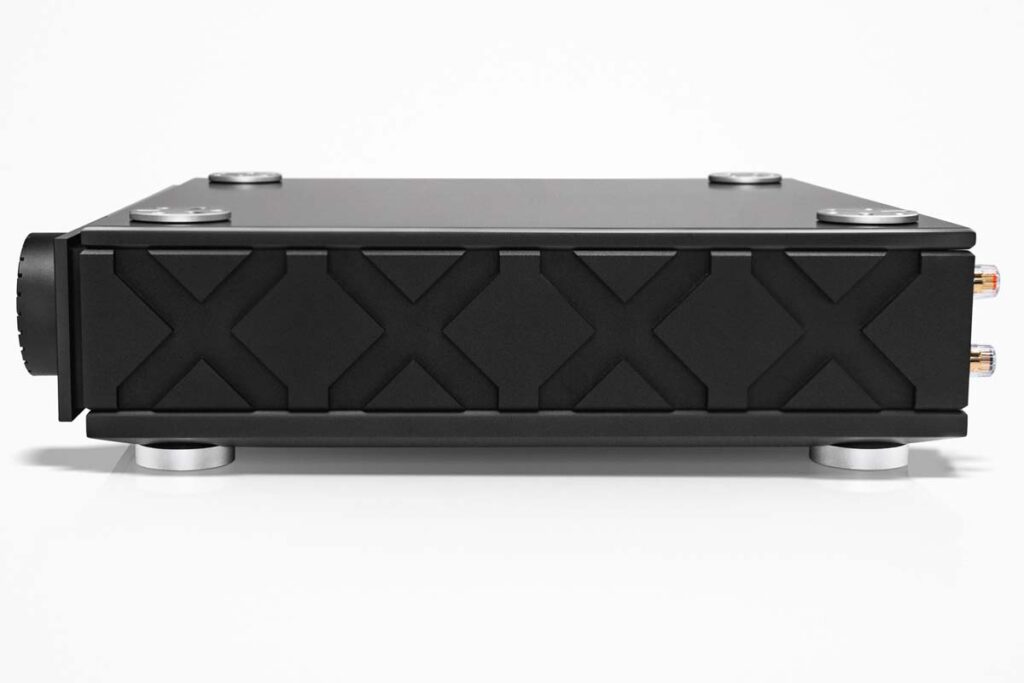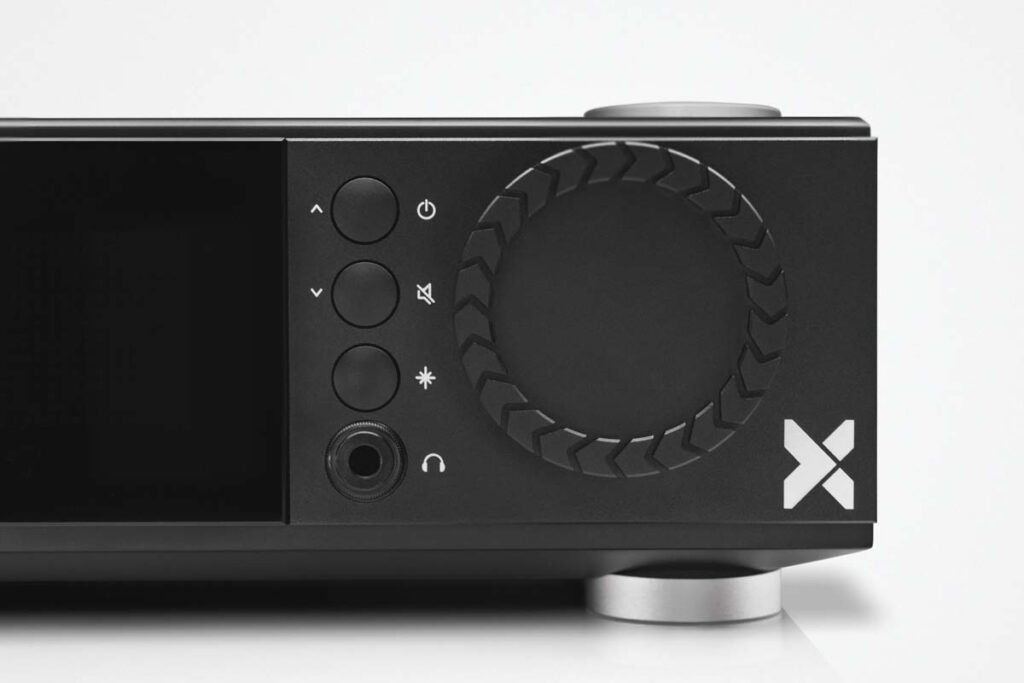“Any sufficiently advanced technology is indistinguishable from magic.”
– Arthur C. Clarke
What the British sci-fi author postulated more than 60 years ago in his essay collection Profiles of the Future manifests itself to us today with almost comic regularity. From large language models like ChatGPT to neural implants to quantum computers, we are surrounded by technologies that completely elude the intuitive understanding of most earthlings – much of what we use every day is, in terms of how it works, nothing short of black magic.
In the world of music reproduction, at least most of the basic technology remains somewhat transparent: the operation of a dynamic driver isn’t rocket science, and anyone willing to dive into the subject with patience and a strong coffee has a fair chance of grasping how and why a transistor does what it does. If a technically trained observer doesn’t understand a component, it’s often only because its creators have kept details of proprietary solutions under wraps – knowledge that could otherwise be understood and copied.
Conventional is easy
But listen to Michael Børresen expound on his products and you quickly realize he has no fear whatsoever that anyone might intellectually dissect them far enough to even think of reverse engineering. And rightly so. He doesn’t guard arcane secrets; on the contrary, he talks freely about so-called Tesla coils, dither circuits, and other “magic tricks” that give Audio Group Denmark’s components their unmistakable sonic signature. And the more he explains, the less you feel you understand. It doesn’t help that almost nothing in the Danes’ circuits follows convention – Børresen insists on reinventing the wheel at every turn, or at least blazing paths rarely traveled.
Where most high-end competitors rely on linear power supplies with beefy toroidal transformers, Børresen is one of the few advocates of switching power supplies. Why? Because the human ear can perceive frequencies up to about 20 kilohertz, but mains power is locked at just 50 hertz. Makes sense at first glance – until the skeptic in me asks what kind of music, and at what level, would require wattage in the treble that’s anywhere near enough for the capacitor banks of a power supply to even notice.
Have I just caught him out, or is this simply my old friend the Dunning-Kruger effect talking? Just because I don’t fully get it doesn’t mean it isn’t true. The fact is, the power supply is one of the most crucial parts when it comes to an amplifier’s sonic performance. Another fact: every amp from the Danish company we’ve tested so far has wowed us with an effortlessly transparent presentation, to which the power supply design has no doubt contributed significantly. And if the results speak for themselves, I honestly don’t care whether we call it voodoo or magic as Clarke defined it – great sound, great mood, simple as that.
The Tesla coils – technologically unrelated to Nikola Tesla’s original inventions, the name is simply a tribute to his spirit of innovation – fit the same pattern. Through a kind of inductive feedback effect, they are said to lower the noise floor and reveal more musical detail. I can’t pretend I fully understand the principle, but every time I hear one of these Danish amplifiers I find myself thinking: Give me more of those mysterious little black wire coils!
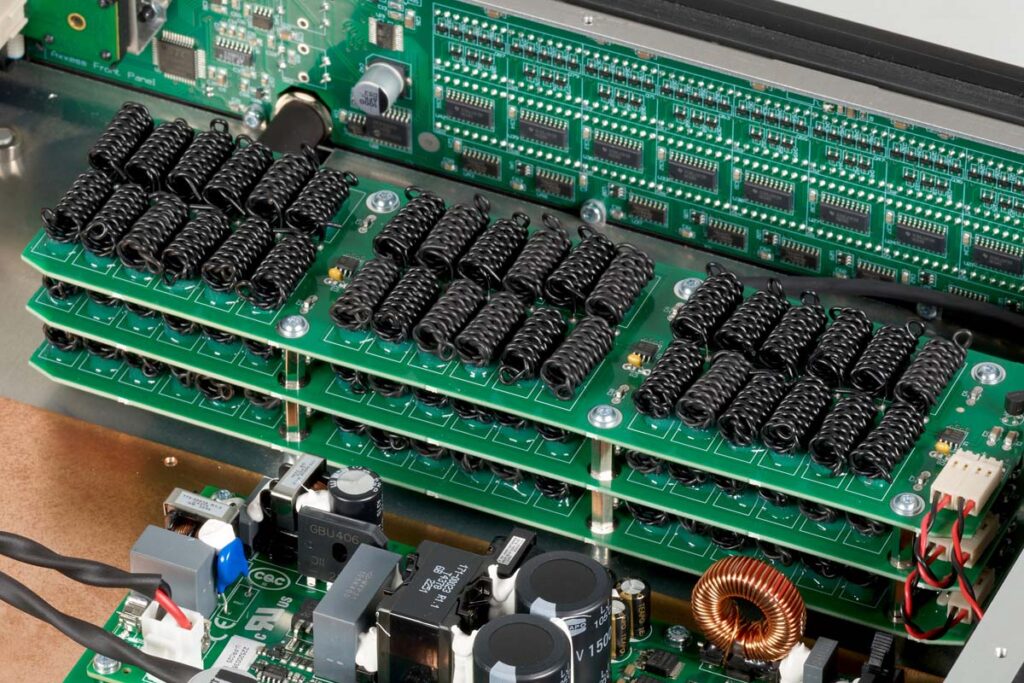
A Danish hierarchy
Tesla coils are also the linchpin of the model hierarchy within Axxess, Audio Group Denmark’s entry-level brand. So far, its electronics line consists only of three streaming integrated amplifiers in the Forté series. Simply numbered 1, 2, and 3, they range from €5,000 to €10,000, and visually you can’t tell them apart – the model name on the back panel is literally the only giveaway. Not even the input section will give you any hints: all three accept primarily digital sources via Toslink, BNC, or USB, with a single unbalanced analog line input plus a second RCA pair for pre-out.
The hardware, too, is fundamentally the same across the line. Regardless of price, every Forté buyer gets the same streaming/DAC module, derived from Aavik’s larger models, built around a lightning-fast 1-bit converter topology. Each also shares the “Resonant Mode” power supply, designed to operate at ultra-high frequencies as stated earlier, which feeds an output stage delivering 100 watts into 8 ohms.
So what do you get for €2,500 or €5,000 extra? Exactly – more of those mysterious wire coils. The Danes are so confident in the noise-reducing, resolution-enhancing impact of these coils that they openly communicate on their website that every other aspect of the Forté hierarchy is identical. Standard specs such as output power aren’t even listed separately – they’re just a solid foundation whose full sonic potential only unfolds with the in-house “secret sauce.”
Accordingly, the only differentiator is the quantity of coils and circuits. The Forté 3 under review packs 108 “standard” Tesla coils, 216 “square” ones, and nine dither circuits – three times as many as the base model – plus four zirconium coils and a hefty copper base plate as a bonus.
No questions left unanswered sonically
How much of a sonic leap should I expect? Hard to say – and unfortunately I don’t have a smaller Forté for direct comparison. So instead I measure the Forté 3’s merits against my own reference gear, specifically my Abrahamsen v2.0. That amp is a few years old now and priced a bit below the Dane, so I fully expected the Axxess to keep it at arm’s length. But the way – and the degree – to which it outclasses the Abrahamsen surprised me nonetheless.
I had braced myself to parse transparency and fine detail, but the biggest difference hit me right away in timbre. The Abrahamsen, making no effort to hide its Electrocompaniet DNA either visually or sonically, tends toward the sonorous side. But only in direct comparison with the Axxess does it become obvious how much coloration the Norwegian injects into the music. Take the opening harpsichord in Focus’s Hamburger Concerto track “Birth”: it’s not like the Abrahamsen does anything wrong, but the Forté renders the sharp attack and metallic decay with an effortlessness and tonal rightness the other simply can’t match.
The piece itself has two contrasting faces: the jangly overtones of the harpsichord give way to heavy guitar riffs and pounding drums carrying the slightly muffled growl that you expect from the genre. The Forté 3 treats both elements with equal care, separating them cleanly while still blending them into a cohesive whole. This seamless blending of two very different musical expressions owes plenty to the Dutch prog rockers’ skill, of course – but delivering it into the listening room with such clarity is no trivial task for an amplifier.
Staying with timbre but going further back in time, I cue up Estampie’s instrumental rendition of Walther von der Vogelweide’s “Palästinalied” from Under the Greenwood Tree. Flute and drum throw their woody colors into an equally woody recording space – a combination that runs the risk of sound monochromatic on lesser gear. Here the Axxess maintains absolute clarity, letting the room imprint as it should but never smothering the instruments, whose natural voices remain distinctly audible.
Finally, I leap forward again and test dynamics with “Automatic Sun” by The Warning (Keep Me Fed). The rated 100 watts per channel apply into 8 ohms, with the Danes’ “UMAC” amp topology being somewhat vaguely touted as being very stable into difficult loads. My Gamut Phi 5s may look tame on paper at 88 dB sensitivity, but their impedance stays below 3 ohms from 200 Hz downward. The Forté 3 powers through without breaking a sweat. Like every AGD component, it doesn’t lay on particularly thick in the bass – unless the music calls for it. This track does, and the Axxess obliges with gusto: the fat bassline rolls through the room with authority, rattling windows at will.
How much of this performance comes from coils, dither circuits, power supply design, or amplifier topology I can’t say – and honestly, it doesn’t matter. Many of the technologies inside the Axxess Forté 3 still feel like black magic to me, but I couldn’t care less. I just sit back and surrender to the spell of the music.
Accompanying Equipment
CD-Players: Audio Note CD 3.1x, Arcam CD72T | Network player: Lumin P1 | Preamplifiers: T+A PSD 3100 HV, Riviera APL-1 | Power amplifiers: Riviera AFS-32, Soulnote M-3X | DAC/Headphone amplifier: AudioQuest DragonFly Cobalt | Intergrated amplifiers: Cambridge Audio Azur 840A, Abrahamsen v2.0, Roksan Caspian 4G Streaming Amplifier | Loudspeakers: GamuT Phi 5, Axxess L3, Peak Sinfonia | Cables: Straight Wire, Cardas, AudioQuest, Sommer Cable | Racks: Lovan Audio, Creaktiv, Finite Elemente, Solidsteel
Network Receiver Axxess Forté 3
Concept: Streaming receiver with Class-A headphone amp and Tesla technology | Analog inputs: 1 × RCA | Digital inputs: 1 × USB-B (PC/Smart Devices), 1 × Toslink, 1 × BNC (S/PDIF), 2 × USB-A (dongles) | Analog outputs: 1 × Pre-Out, single-wire speaker terminals, 6.3 mm headphone out | Amplifier: 2 UMAC stages (Class D) | Output power (8 Ω): 2 × 100 W | Special features: 328 Tesla coils (108 standard, 216 square, 4 zirconium), 9 dither circuits, sandwich chassis | Accessories: Power cable, remote | Finish: Black | Dimensions (W/H/D): 37/11/42 cm | Weight: 9.0 kg | Warranty: 2 years | Price: around €10,000
Audio Group Denmark
Rebslagervej 4
9000 Aalborg
Denmark
info@audiogroupdenmark.com

